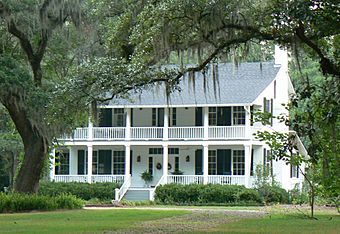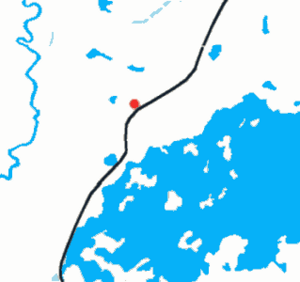Bannerman Plantation facts for kids
Quick facts for kids |
|
|
Bannerman Plantation
|
|
 |
|
| Location | Leon County, Florida |
|---|---|
| Nearest city | Tallahassee |
| Architectural style | Greek Revival, Federal |
| NRHP reference No. | 02000606 |
| Added to NRHP | June 6, 2002 |

Bannerman Plantation was a large farm in Leon County, Florida. It was located near the community of Meridian and Lake Iamonia. This plantation was established around 1852 by Charles Bannerman. Like many plantations in the Southern United States, it relied on the forced labor of enslaved people. By 1860, 67 people were enslaved and forced to work on this land.
What Was Bannerman Plantation?
A plantation was a very large farm, especially common in the southern parts of the United States before the American Civil War. These farms grew crops like cotton and corn. The work on these plantations was done by people who were enslaved. They were forced to work without pay and had no freedom. Bannerman Plantation covered about 1,500 acres, which is a huge area of land.
The Plantation House
The main house at Bannerman Plantation is a two-story building. It has porches on both floors that wrap around parts of the house. Eight tall columns support these porches, giving the house a grand look. There are fireplaces on both the left and right sides of the home. A kitchen area extends off the left side of the house. The house is located at 13426 N. Meridian Rd.
Life and Work on the Plantation
In 1860, records show us what Bannerman Plantation was like. About 700 acres of the land were "improved," meaning they were used for farming. Another 800 acres were "unimproved," which might have been forests or unused land. The plantation itself was valued at about $14,475 at that time. The tools and machinery used for farming were worth $700, and the farm animals were valued at $5,000.
The most important part of the plantation's operation was the forced labor of 67 enslaved people. They grew crops like corn and cotton. In 1860, the plantation produced 4,000 bushels of corn and 120 bales of cotton. These crops were very important for the plantation's income.



